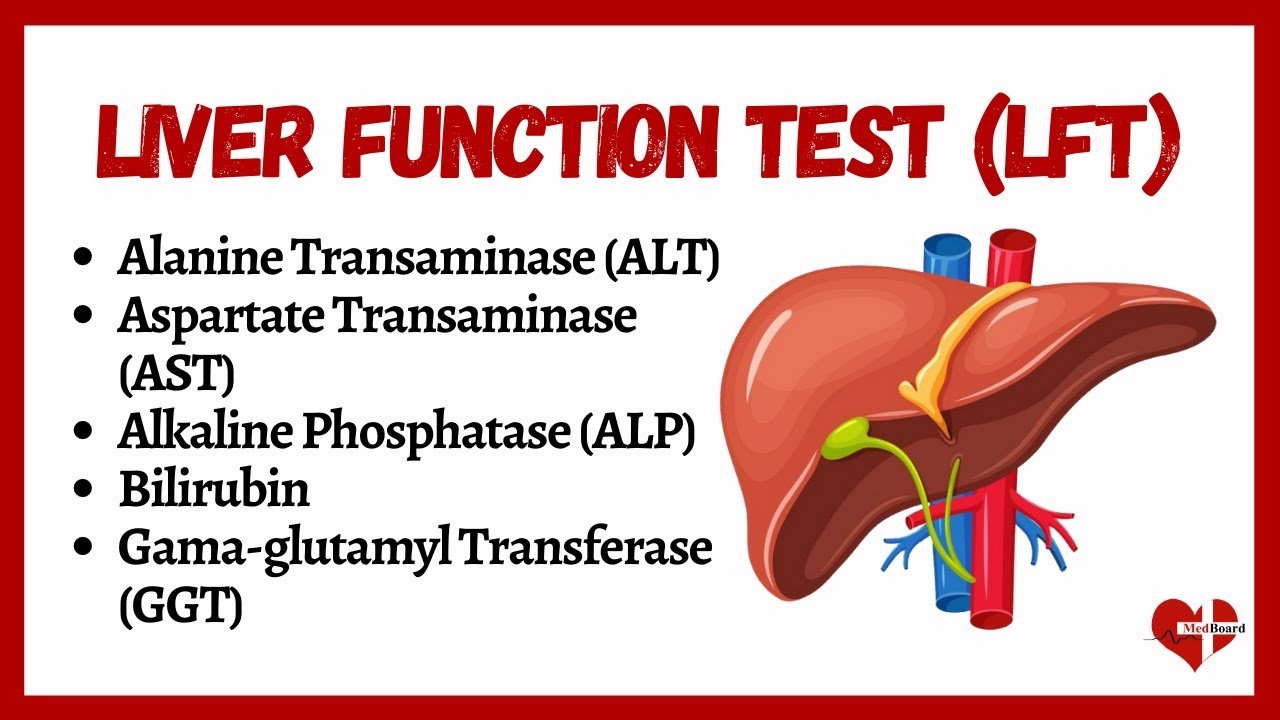Liver function tests, also referred to as a hepatic panel, are groups of blood tests that measures the levels of several substances (enzymes and proteins) excreted by your liver. Levels that are higher or lower than normal can indicate liver problems. Several biochemical parameters are assessed in LFT. These are: Bilirubin (Conjugated and Unconjugated)
Alanine Aminotransferase (ALT) Aspartate Aminotransferase (AST) Alkaline Phosphatase (ALP), Gamma Glutamyl Transpeptidase (GGTP) Lets now see each of them, one by one: BILIRUBIN: Bilirubin is a breakdown product of hemoglobin. When RBC complete their life span, which is 120 days, they are destroyed in the body and hemoglobin is released.
This hemoglobin further breaks down into heme and globin component. The heme component is converted into biliverdin which further converts into Bilirubin. This bilirubin is in unconjugated (also called indirect) form which is insoluble in water. So, it binds with albumin and then transported to liver.
In the liver, bilirubin is converted in conjugated form which is water soluble and can be easily excreted through urine or faeces. So, if there is increase is increase in bilirubin level, it indicates that something is wrong in your body, particularly in liver. The main causes of increased bilirubin level in blood are:
Hemolysis i.e. breakdown of RBCs Failure of conjugating system in liver Obstruction in the biliary system Our next biochemical parameter or test is: ASPARTATE AMINOTRANSFERASE (AST) AST was previously called SGOT, serum Glutamate Oxaloacetate Transaminase. AST is high in Heart muscle, Liver and Skeletal muscle, but low in Kidneys, Pancreas, RBC.
Damaged tissues release AST in blood. Therefore, AST level in blood is directly related to extent of cellular damage or injury. AST level in plasma is elevated 8 hrs after cellular injury, peak at 24 to 36 hrs, and return to normal in 3 to 7 days.
AST level in blood is always high in patients with chronic Hepatocellular disease acute hepatitis Cirrhosis and acute extra-hepatic obstruction. Factors which interfere with serum AST levels include: Pregnancy, in which there is decrease in AST level. Exercise, which increases levels of AST Drugs, such as antihypertensives and oral contraceptives.
The third test we will talk about is ALANINE AMINOTRANSFERASE (ALT): ALT was previously called SGPT which stands for Serum Glutamate Pyruvate Transaminase. ALT is found mainly in Liver, lesser quantities are in Kidneys, Heart and Skeletal muscle; Liver injury causes elevation of ALT level in blood;
ALT is more liver-sensitive or specific indicator of liver disease, as compared to AST. Its level is directly related to extent of liver injury, and raised level of ALT can be seen in chronic alcoholism, hepatic cancer and chronic cirrhosis. ALANINE PHOSPHATASE (ALP): ALP is primarily found in liver, bones and placenta.
This test has low specificity for liver disorder because there are other conditions that can also increase ALP levels. These are: Cholestasis, in which there is obstruction of intra or extra-hepatic bile ducts. Pregnancy. bone diseases specifically osteoblastic cancers and Paget’s disease. New bone growth can also cause elevation in ALP levels.
So, because of these uncertainties another test is performed called GGT. GAMMA GLUTAMYL TRANSPEPTIDASE (GGTP): This test is highly accurate in indicting Cholestasis. It is the most sensitive Liver enzyme for detecting Biliary Obstruction, Cholangitis, or Cholecystitis. GGTP level is very high in Liver, but low in Kidney, Heart, Intestine, Brain and Prostate gland.
Elevation of GGTP parallels that of ALP in Liver disease, but GGTP is not increased in Bone disease. So, if ALP is increased but GGTP levels are normal that indicates bone disease. We hope you have found this video helpful. If you liked the video, hit like and subscribe button.
Follow us on our social site to get notified about latest videos.
#Liver #Function #Tests #LFTs #liver #function #test #interpretation #Animation #MultiLanguages

